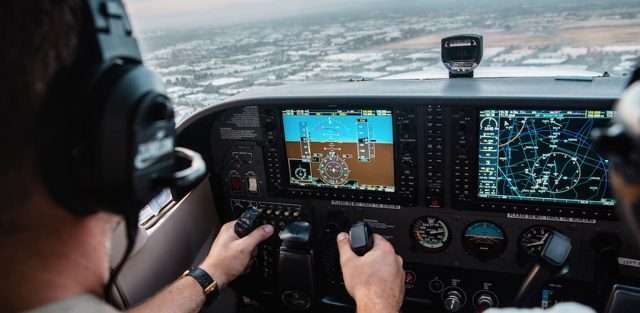Abeam

Typically represents a general position, rather than a precise point. For example, a private jet charter plane is “abeam” a fix, point or object when that fix, point or object is approximately 90 degrees to the right or left of the aircraft track. A fix can refer to a number of objects, including an:
- Airport
- Waypoint
- Tower or beacon
- Geographical object
- Manmade object
- Other NAVAID (navigational aid)
When a charter plane is abeam a fix, a pilot might be required to report his or her positioning to air traffic control and wait for specific instructions. Or, in other instances, being abeam a fix will provide the pilot with a reference point to execute certain maneuvers. An example of this is when an air charter is in a holding pattern. If the pilot is instructed by air traffic control to make his turn when the aircraft is abeam a certain point, it makes it easier to maintain a proper course. As you can see, this provides an easy way for pilots and air traffic control to stay on the same page and ensure the pilot takes the appropriate action at the right time. This can be particularly useful if a pilot is unexpectedly required to change course.
Typically represents a general position, rather than a precise point. For example, a private jet charter plane is “abeam” a fix, point or object when that fix, point or object is approximately 90 degrees to the right or left of the aircraft track. A fix can refer to a number of objects, including an:
- Airport
- Waypoint
- Tower or beacon
- Geographical object
- Manmade object
- Other NAVAID (navigational aid)
When a charter plane is abeam a fix, a pilot might be required to report his or her positioning to air traffic control and wait for specific instructions. Or, in other instances, being abeam a fix will provide the pilot with a reference point to execute certain maneuvers. An example of this is when an air charter is in a holding pattern. If the pilot is instructed by air traffic control to make his turn when the aircraft is abeam a certain point, it makes it easier to maintain a proper course. As you can see, this provides an easy way for pilots and air traffic control to stay on the same page and ensure the pilot takes the appropriate action at the right time. This can be particularly useful if a pilot is unexpectedly required to change course.








